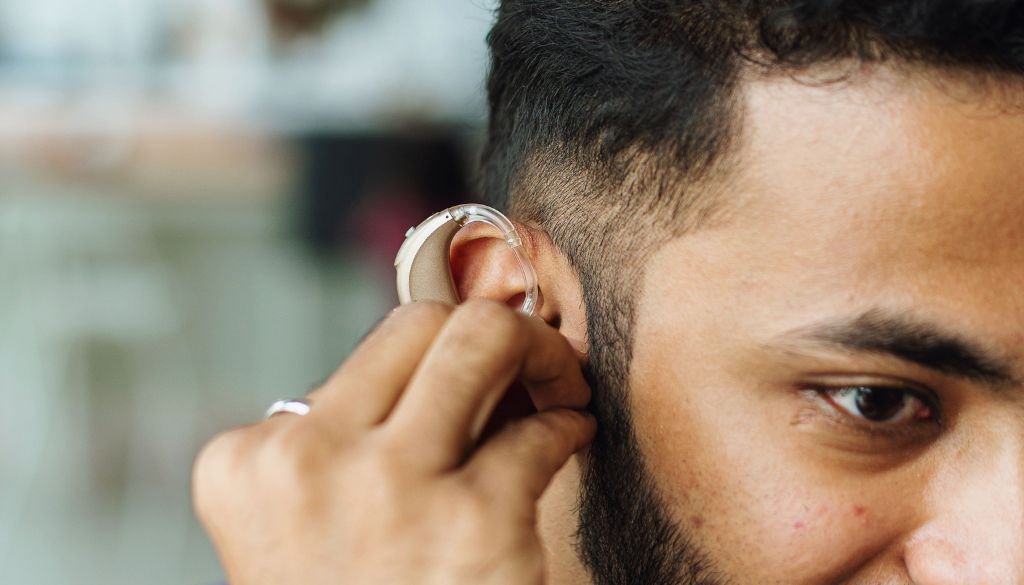Learning how To Make Hearing Aid Fit Better is a crucial step in adapting to new hearing aids, requiring patience and consistent practice. This guide is designed to assist you in comfortably wearing your hearing aids and mastering their insertion. As you begin this journey, be prepared to encounter unfamiliar sounds and allocate time for your ears and brain to adjust.

Thanks to advancements in hearing aid technology, many devices now feature automatic settings that adapt to various listening environments, enhancing your auditory experience. Additionally, it’s beneficial to inform your family and friends about the limitations of hearing aids and to discuss effective communication strategies. This will help create a supportive environment as you navigate the nuances of wearing and optimizing your hearing aids for the best fit and sound quality.
Key Takeaways:
- Consistency is vital when wearing hearing aids.
- Practising and inserting them correctly can make the process easier.
- Expect unfamiliar sounds as your hearing improves.
- Hearing aid technology has automatic settings to optimize your experience.
- Educate your family and friends about hearing aid limitations and effective communication strategies.
Common Challenges When Adjusting to Hearing Aids
Adjusting to new hearing aids can be a challenging experience. It involves changing your routine and a new way of hearing. As you begin the adjustment process, you may encounter several challenges.
One major challenge is learning how to insert the hearing aids properly. It takes time and practice to get comfortable with this task. Remembering to change or charge the batteries can also be a new responsibility that requires some adjustment. Being patient with yourself is essential as you develop these new habits and routines.
Another challenge is adjusting to the initial sound of the hearing aids. The amplified sound may initially feel harsh, tinny, or too loud. This is because your ears are not accustomed to the level of amplification provided by the hearing aids. It’s essential to approach this adjustment period patiently and take it one day at a time. Gradually, your brain will adapt to the new sounds, and they will become more natural.
Ultimately, the challenges you face while adjusting to hearing aids are temporary. With time and persistence, you will get used to wearing them and reap the benefits of improved hearing.
“Adjusting to hearing aids can be a process that requires patience and persistence. It’s important to approach the adjustment period with a positive mindset and give yourself time to adapt to the new way of hearing.” – Audiologist Jane Smith.
Being aware of the common challenges and knowing they are part of the adjustment process can help you stay motivated and focused on the end goal – a better hearing experience with your new aids.
Tips for Wearing Hearing Aids Correctly
Consistency is vital when wearing hearing aids. It is essential to wear them consistently and for as long as possible throughout the day. While the initial instinct may be to remove them, it is crucial to resist this temptation and make wearing hearing aids a regular part of your daily routine.
Putting them in also makes the process smoother and more efficient. Take the time to familiarize yourself with the proper insertion technique and practice it regularly. Over time, it will become second nature, making it easier to wear your hearing aids without hassle.
As you adjust to wearing hearing aids, it is customary to hear unfamiliar sounds. This is because your hearing is improving, and you are rediscovering sounds you may not have heard before. Embrace this experience and give yourself time to adapt.
Adjusting the Settings
Feel free to communicate with your audiologist if certain sounds are too loud or uncomfortable. They can help adjust the settings on your hearing aids to ensure optimal sound quality and comfort. Regular communication with your audiologist is essential throughout the adjustment process.
Remember, wearing hearing aids correctly involves consistency, practice, and patience. Embrace the new sounds you will encounter, and don’t hesitate to seek professional guidance when needed. By wearing your hearing aids consistently and correctly, you can enjoy a more enhanced hearing experience.
The Role of Hearing Aid Technology
When it comes to fitting and adjusting hearing aids, technology plays a crucial role in providing a seamless experience. Modern hearing aids have advanced features that make the process easier and more convenient for users. One of the critical benefits of hearing aid technology is the ability to adjust volume and settings automatically based on the user’s environment.
With automatic settings, users no longer have to manually change their hearing aid settings when moving between different listening environments. Whether in a quiet room, a noisy restaurant, or a crowded party, the hearing aids will automatically optimize the sound to provide the best listening experience possible. This saves time and ensures that users can focus on enjoying conversations and activities without constantly worrying about adjusting the volume or settings.
Additionally, hearing aids equipped with wireless connectivity offer even more convenience. These devices can be connected to electronic devices such as mobile phones and TVs, allowing for seamless audio streaming directly to the hearing aids. Users can quickly answer phone calls, listen to music, or watch TV without needing external headphones or devices. The convenience and accessibility provided by this technology enhance the overall hearing experience and make it easier for users to stay connected in today’s digital world.
Support from Family and Friends
Involving family and friends in your journey with hearing aids can significantly impact your overall experience. Educating them about your condition and the limitations of hearing aids can help them understand how to support you effectively. Communicate that hearing aids improve your hearing but do not provide perfect hearing, setting realistic expectations from the start.
Share communication strategies with your loved ones to facilitate better conversations. Please encourage them to talk face-to-face, reducing background noise as much as possible. Speaking at an average volume and pace can also enhance communication. These simple adjustments can make a world of difference in your ability to engage in meaningful conversations with the support of your family and friends.
Remember, wearing hearing aids is not just an individual adjustment; it requires a collective effort from your loved ones. Emphasize the importance of patience and understanding as you navigate this new chapter in your life. With their support and effective communication strategies, you can enhance your hearing experience and strengthen your relationships.
Conclusion
Adjusting to hearing aids may require time and patience, but the benefits of wearing them are well worth it. By consistently wearing your hearing aids and practicing proper insertion, you can gradually adapt to this new experience. It’s important to remember that initially, you may encounter unfamiliar sounds as your hearing improves.
Fortunately, advancements in hearing aid technology have made the adjustment process more accessible. With automatic settings that optimize understanding in different listening environments, you can enjoy improved hearing without needing constant manual adjustments. Additionally, some hearing aids can be wirelessly connected to electronic devices, enhancing convenience and accessibility in your daily life.
Support from family and friends is invaluable during this journey. You can help them better understand how to support you by involving them in the fitting and adjustment process. Communicating the limitations of hearing aids and sharing effective communication strategies, such as talking face-to-face and reducing background noise, can significantly enhance your conversations and overall communication experience.
Ultimately, wearing hearing aids can significantly improve your overall hearing experience. With patience, practice, and the support of loved ones, you can navigate the adjustment period and enjoy the full benefits of improved hearing.
Frequently Asked Questions
How long does it take to adjust to new hearing aids?
Adjusting to new hearing aids can vary from person to person. It may take a few weeks to a few months to fully adjust.
What should I expect when wearing hearing aids for the first time?
When wearing hearing aids for the first time, you may experience unfamiliar sounds, such as harsh or tinny. This is normal as your brain adjusts to the new amplification.
How often should I wear my hearing aids?
It is essential to wear your hearing aids as much as possible consistently. This helps your brain adapt to the new sounds and improves your hearing experience.
How do I properly insert my hearing aids?
Proper insertion of hearing aids is essential for optimal performance. Your audiologist can show you the correct technique, which becomes part of your daily routine with practice.
Can I adjust the volume and settings on my hearing aids?
Modern hearing aids have automatic settings that optimize understanding in different listening environments. While adjustments can still be made if desired, most people find the automatic settings meet their needs.
How can I involve my family and friends in the hearing aid adjustment process?
It is helpful to educate your family and friends about the limitations of hearing aids and communication strategies that can assist in conversations. This helps them understand how to support you better.
What communication strategies can improve conversations with hearing aids?
Some communication strategies include talking face-to-face, reducing background noise, speaking at an average volume, and speaking slowly. These strategies facilitate conversations and improve communication.



